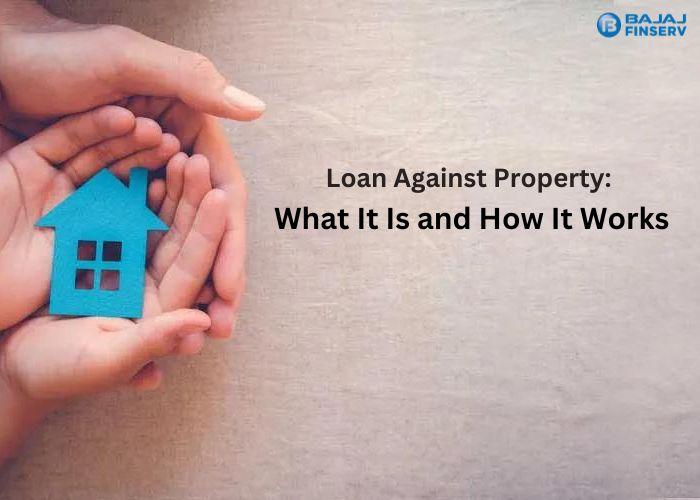In the ever-evolving financial market, individuals often find themselves in need of sizable funds to meet various personal or business needs. One viable solution for those who own real estate is a loan against property (LAP). This financial instrument uses your property as collateral to secure a loan, providing you with the liquidity you need without having to sell your asset. In this article, we examine what a loan against property is, how it works, and the procedural steps involved in obtaining one.
What Is a Loan Against Property?
A loan against property is essentially a secured loan where the borrower pledges their commercial or residential property as collateral to the lender. The loan amount sanctioned depends on the property’s market value, typically ranging from 50% to 70% of its current worth. Since it’s a secured loan, both interest rates and tenures tend to be more favorable compared to unsecured loans such as personal loans.
Advantages of Loan Against Property
- Lower Interest Rates: Due to the collateral, the interest rates on LAPs are generally lower compared to unsecured loans.
- Longer Tenures: Lenders offer longer repayment periods, often up to 15 years, which makes the EMIs more manageable.
- Substantial Loan Amount: Since the loan is secured against the property, lenders are willing to offer larger loan amounts.
- Multiple Uses: The funds obtained can be used for various purposes, including business expansion, education, medical emergencies, and more.
How Does a Loan Against Property Work?
Property Evaluation
The process begins with a thorough evaluation of the property you intend to use as collateral. This ensures that the property’s worth aligns with the loan amount you’re requesting.
Application Process
- Documentation: Prepare essential documents such as property papers, proof of identity, and income details. Lenders require these documents to verify your eligibility.
- Submission: Fill out the loan application form and submit it along with the necessary documents to the lender.
- Processing Fee: Some lenders charge a non-refundable processing fee for evaluating your application, which typically ranges between 1% to 2% of the loan amount.
Credit Appraisal
Lenders perform a credit appraisal to determine your loan eligibility. They evaluate factors such as your credit score, repayment capacity, and existing financial obligations. A good credit score can significantly influence the approval process and the interest rate offered.
Legal Check and Property Valuation
Once your creditworthiness is assessed, the lender conducts a legal and technical evaluation of the property to ensure it is free from any encumbrances. Property valuation experts may be involved to ascertain the market value.
Approval and Disbursement
If your application and the property meet the lender’s criteria, the loan is approved. After approval, the loan agreement is drafted and signed. The funds are then disbursed, either directly into your bank account or via a cheque, based on the lender’s policy.
Loan Against Property Process
Understanding the loan against property process is crucial for a smooth experience. Here’s a detailed look at the typical steps involved:
Step 1: Assess Your Requirements
Determine the amount you need and evaluate whether your property can realistically fetch the required funds. Remember, lenders usually provide up to 70% of the property’s current market value.
Step 2: Research Lenders
Compare various lenders regarding interest rates, processing fees, tenure options, and prepayment charges. Online financial marketplaces can provide a comprehensive comparison to help you choose the most suitable lender.
Step 3: Prepare Documentation
Gather all necessary documents in advance to streamline the process. Commonly required documents include:
Property documents
Proof of identity (Aadhaar, PAN, Passport)
Proof of address (Utility bills, Voter ID)
Income documents (Salary slips, IT returns)
Step 4: Application Submission
Fill out the lender’s application form, either online or offline, and submit it along with the required documents.
Step 5: Property Valuation and Legal Check
The lender appoints a property valuer and a legal team to verify the authenticity and market value of the property.
Step 6: Credit Evaluation
Lenders evaluate your credit score, income, and existing liabilities to assess your repayment capacity.
Step 7: Sanctioning the Loan
Upon successful evaluation, the lender approves the loan amount and informs you of the terms and conditions.
Step 8: Signing Agreement and Disbursement
After accepting the loan offer, sign the loan agreement. The lender disburses the loan amount to your account post-signing.
Conclusion
A loan against property offers a viable funding option for those who need significant amounts of money by leveraging their real estate assets. Understanding what is a loan against property and the intricate details of the loan against property process can help borrowers make informed decisions, ensuring a seamless experience. With lower interest rates, longer repayment tenures, and higher loan amounts, a loan against property can be an advantageous way to meet various financial needs without liquidating your valuable real estate assets. However, it’s crucial to assess your repayment capacity and choose the right lender to avoid future financial stress.



